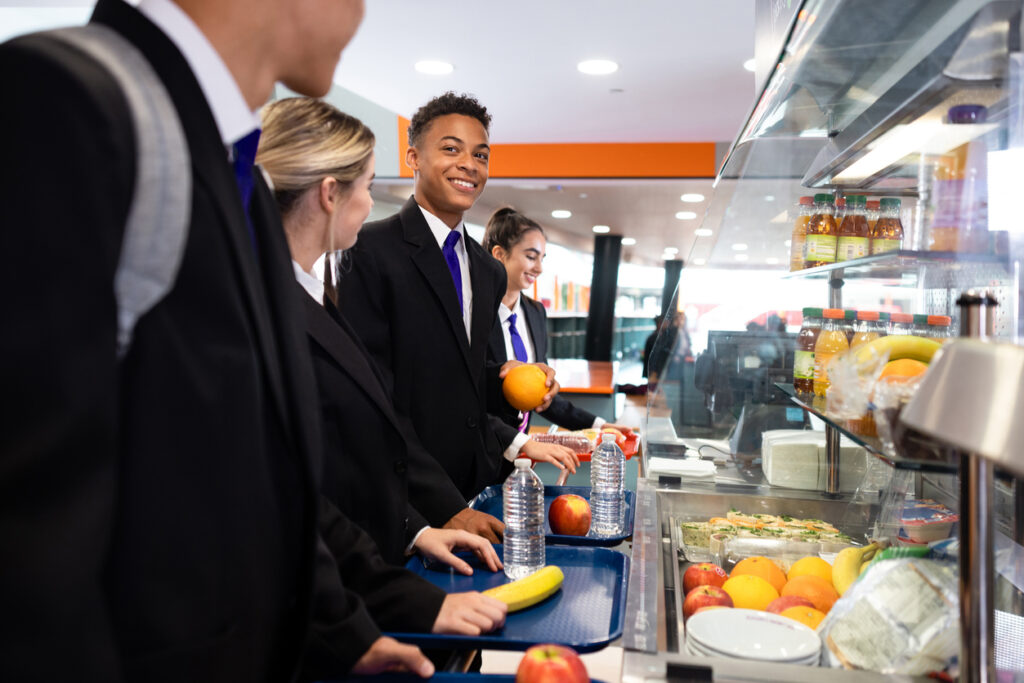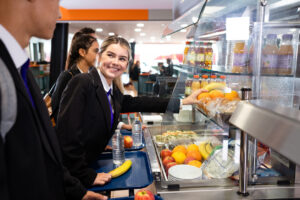Achieving maximum Free School Meal (FSM) funding in your school has many benefits. Importantly, if all children who are entitled to a free school meal actually take their meal, it helps to combat hunger and food poverty. The links between good nutrition and learning are well known, and ensuring all children, no matter their background, have access to a nutritious meal during the school day, helps reduce disparity in educational attainment.
Moreover, the number of pupils claiming FSM funding often determines the amount of additional funding your school receives through the Pupil Premium scheme. In a nutshell, ensuring all eligible children sign up to FSM leads to increased financial support, which can be used to deliver higher quality school meals, better educational resources and services.
Mike Neales, Senior Consultant at Litmus, who specialises in the education sector, shares his advice on how schools can achieve maximum FSM funding and increase their school meal uptake:
- Make FSM easily accessible and discreet for pupils: Years ago, pupils who were on free school meals would have to queue up separately to their friends to get a ticket and claim their lunch. Those days are long gone, but schools should still consider how they can make it as easy and discreet as possible for pupils as this will remove any embarrassment and encourage eligible pupils to get their free meals.
Cashless and online payment systems have helped with this as the payment processes look identical to those paying for school lunches. However, there should also be consideration given on school trip days. Often FSMs are more visible as packed lunches are provided in brown paper bags, and often their friends may take money to buy lunch when on the trip. Encouraging all pupils to take a school packed lunch will help, as will avoiding trips to cafes or eateries that result in some children unable to buy any food, when their friends are.
- Be flexible on when pupils can spend their FSM: Some schools allow pupils to spend their FSM allocation at mid-morning break or lunchtime. This gives pupils choice around when they decide to spend their money, exactly the same way that pupils that pay for their food at school have. Mid-morning is often the preferred time for students to purchase their lunch; some may not have had breakfast and be hungry at that point, or they may want to buy their food at morning break to save them having to queue and buy it at lunchtime, if they have any clubs or groups to attend at lunch break.
To make this work, schools would need to ensure they have a decent range of lunch options available to purchase at mid-morning break time. You don’t want the only options to be grab and go hand held snacks. Meal deal offers can work well here – a baguette, fruit and drink can easily be put in a school bag and saved until lunch time and offers good value for money.
- Work hard around census days: On census days, in January, May and October, the number of pupils taking FSMs are counted, which then impacts the amount of funding the school receives through the Pupil Premium scheme. It’s important on those days that schools encourage maximum uptake of FSMs. This could be incentivised by offering special menus or discounted meals on that day, and marketing these well so pupils are aware ahead of time, and come prepared to take their meal that day.
- Give choice: Ensure pupils on FSMs have a range of meal options within their allowance. Hot and cold choices, that change daily and cater towards a variety of dietary requirements, is key. Meal deals, that offer a quality meal at a value price, also go down well. Again, don’t just offer one meal deal – aim for six meals deals each day – and ensure they all have a cash tariff equivalent to that of the FSM allowance.
If you’d like to hear more about how we can help your school improve the school meal uptake then get in touch with us here
The Litmus team











